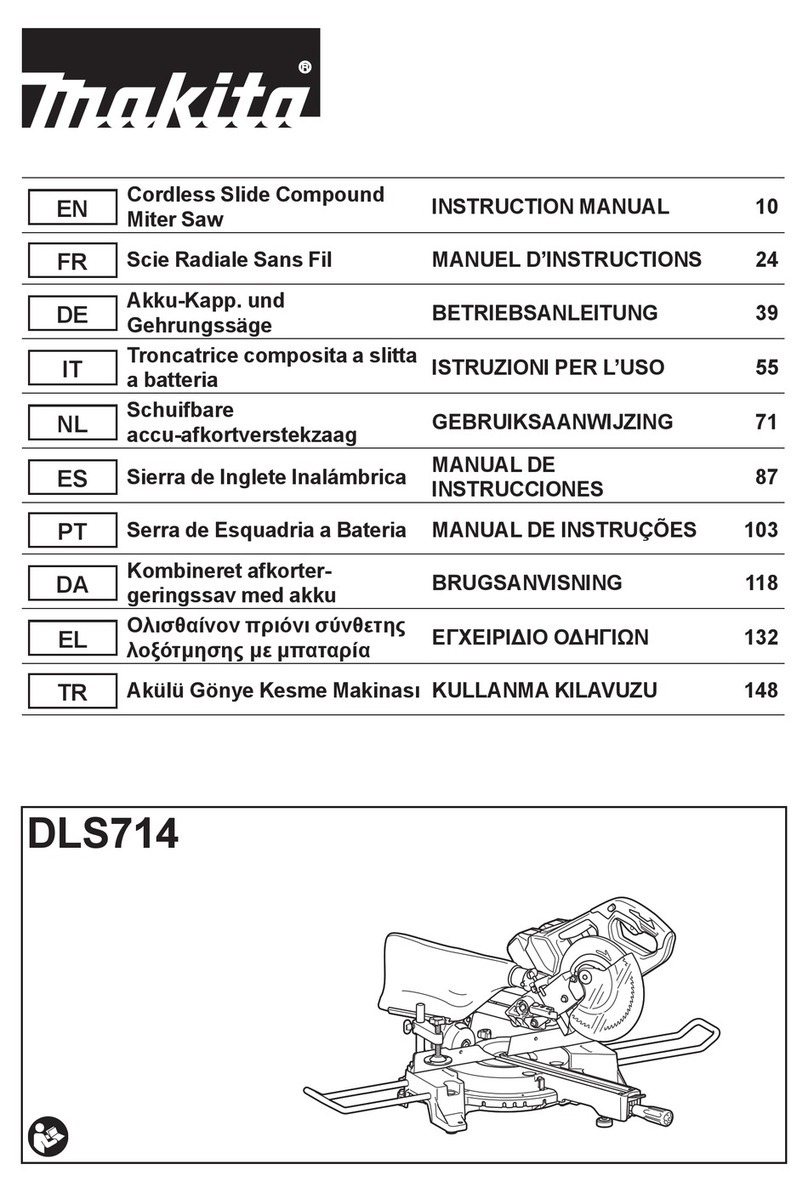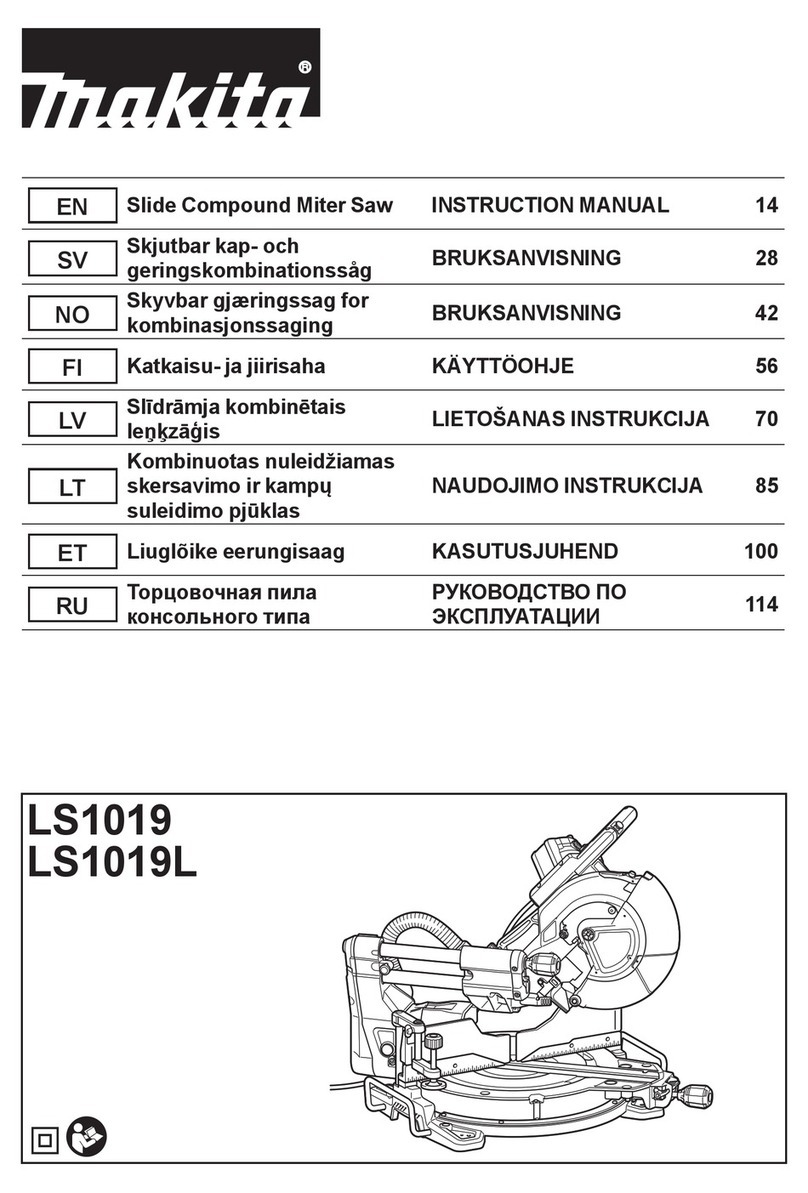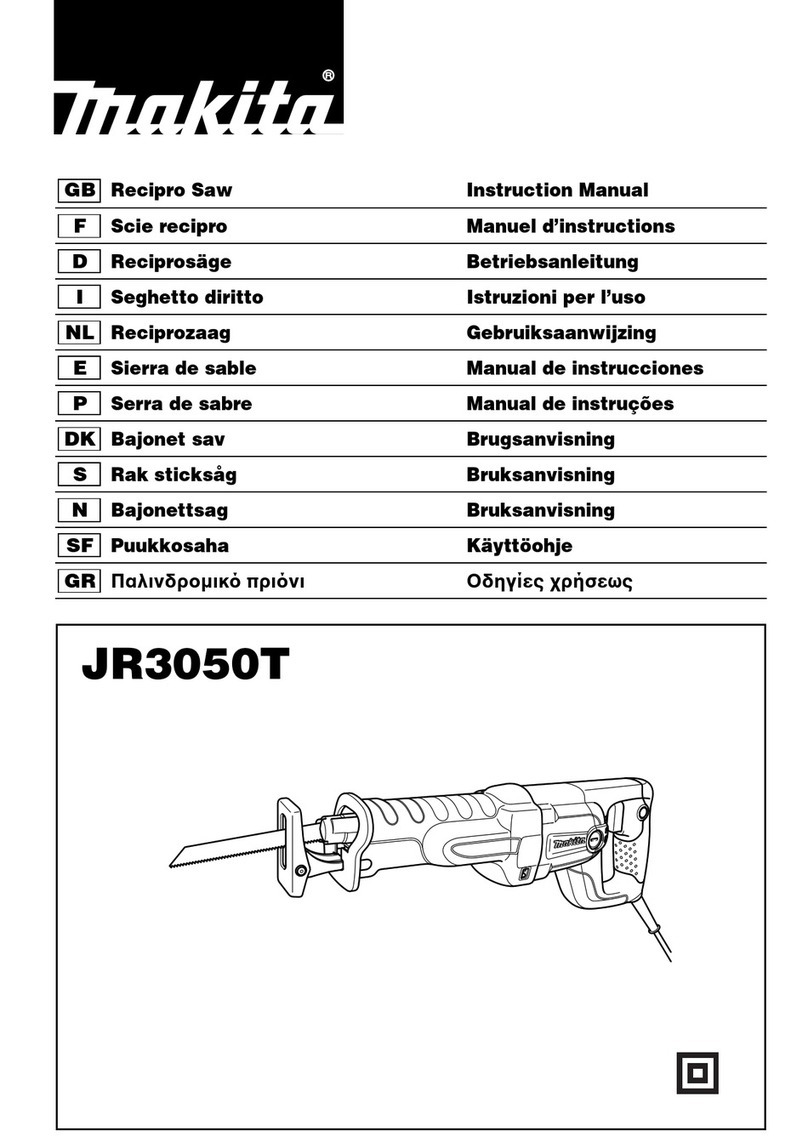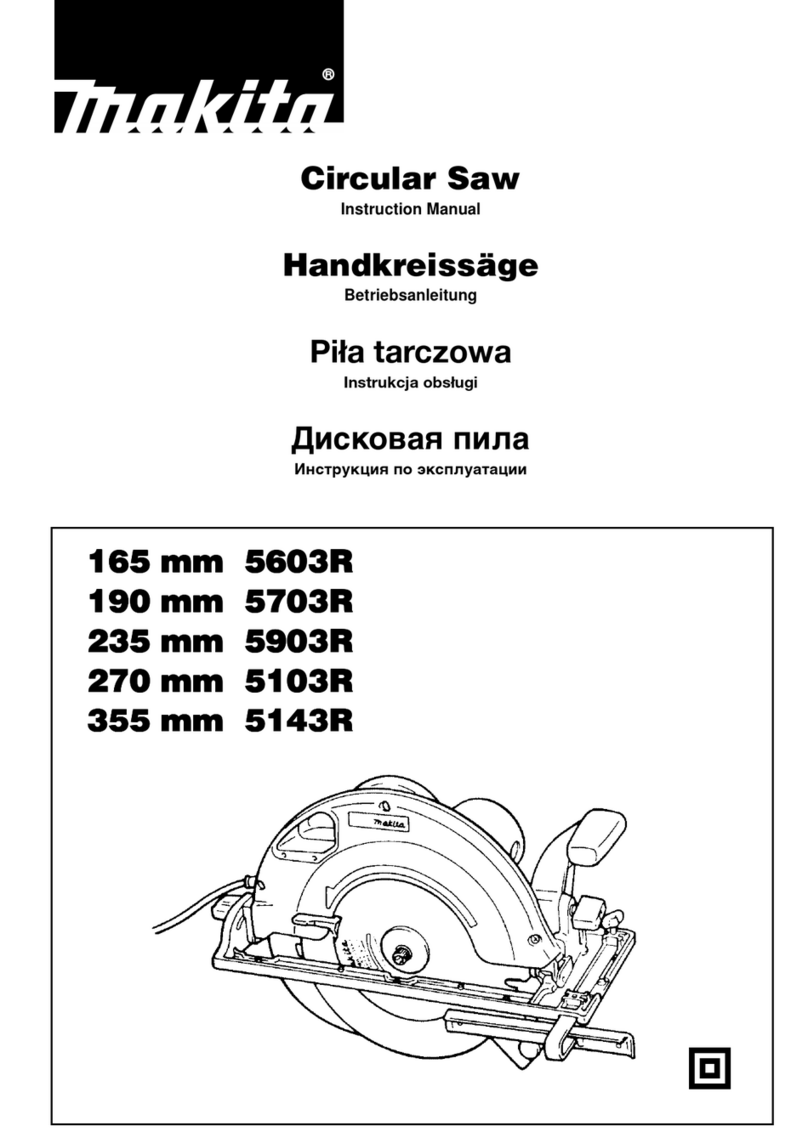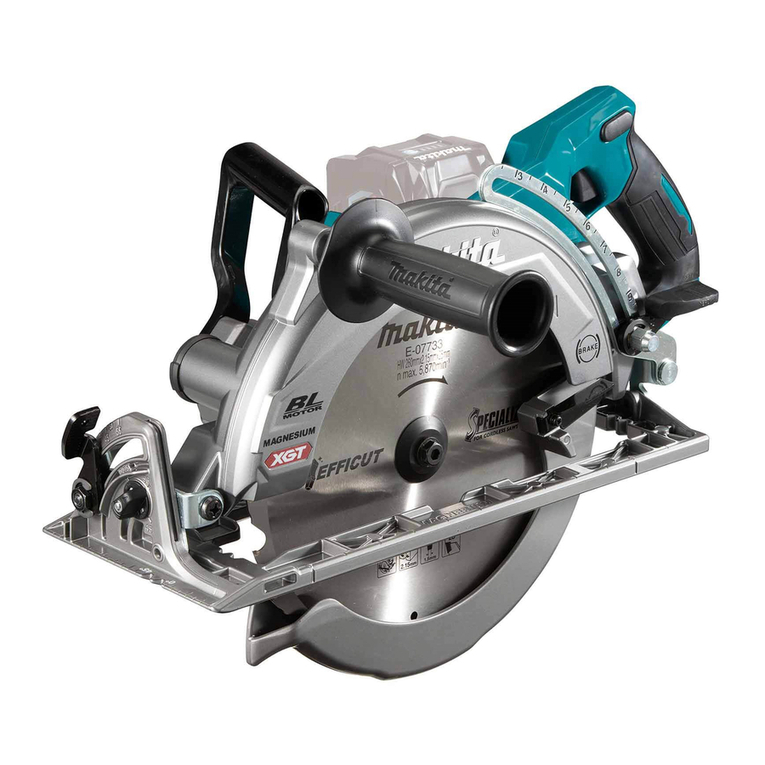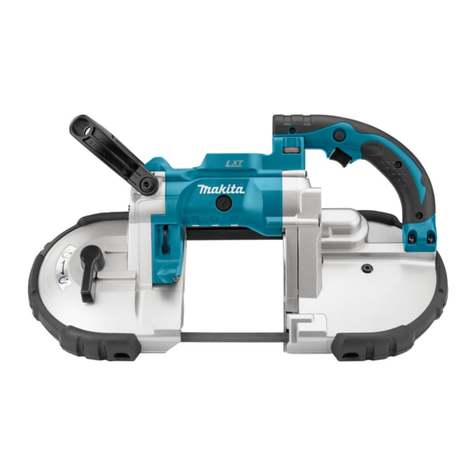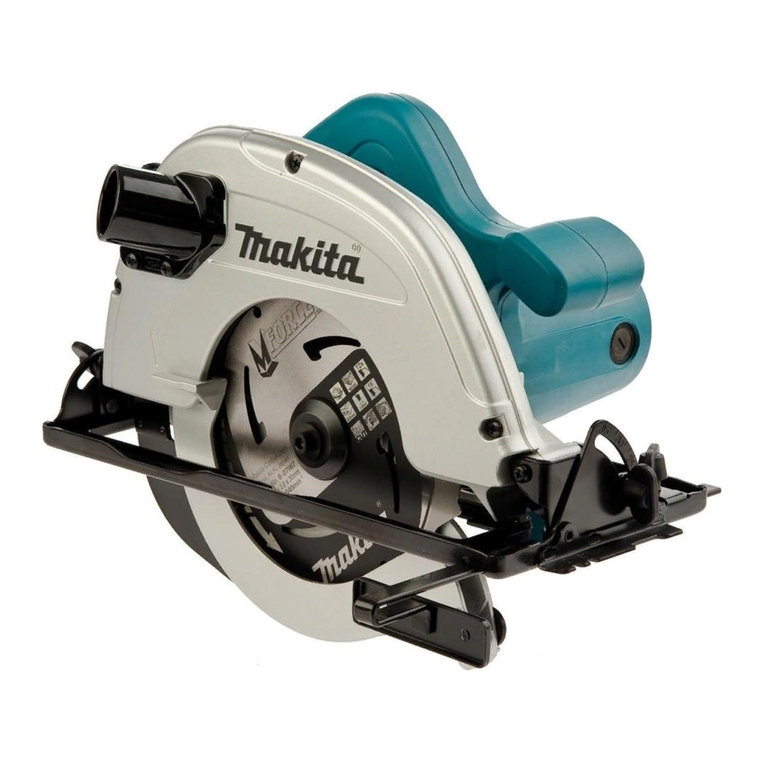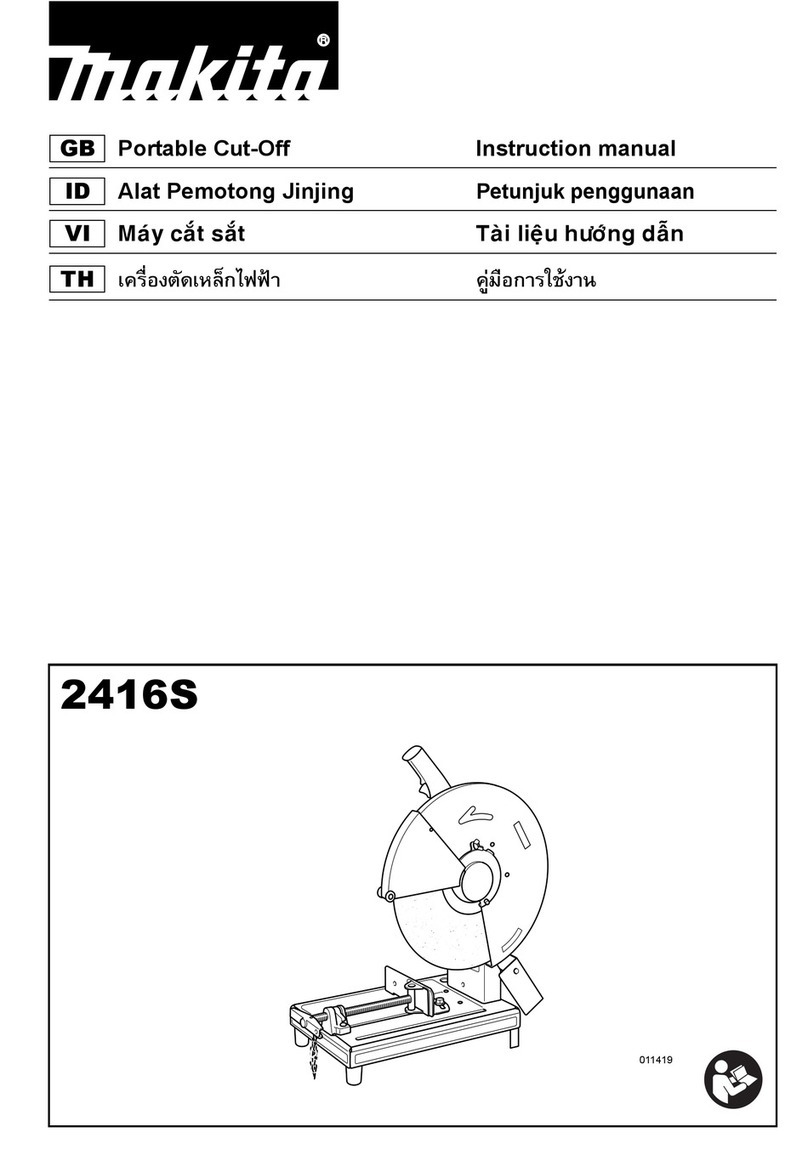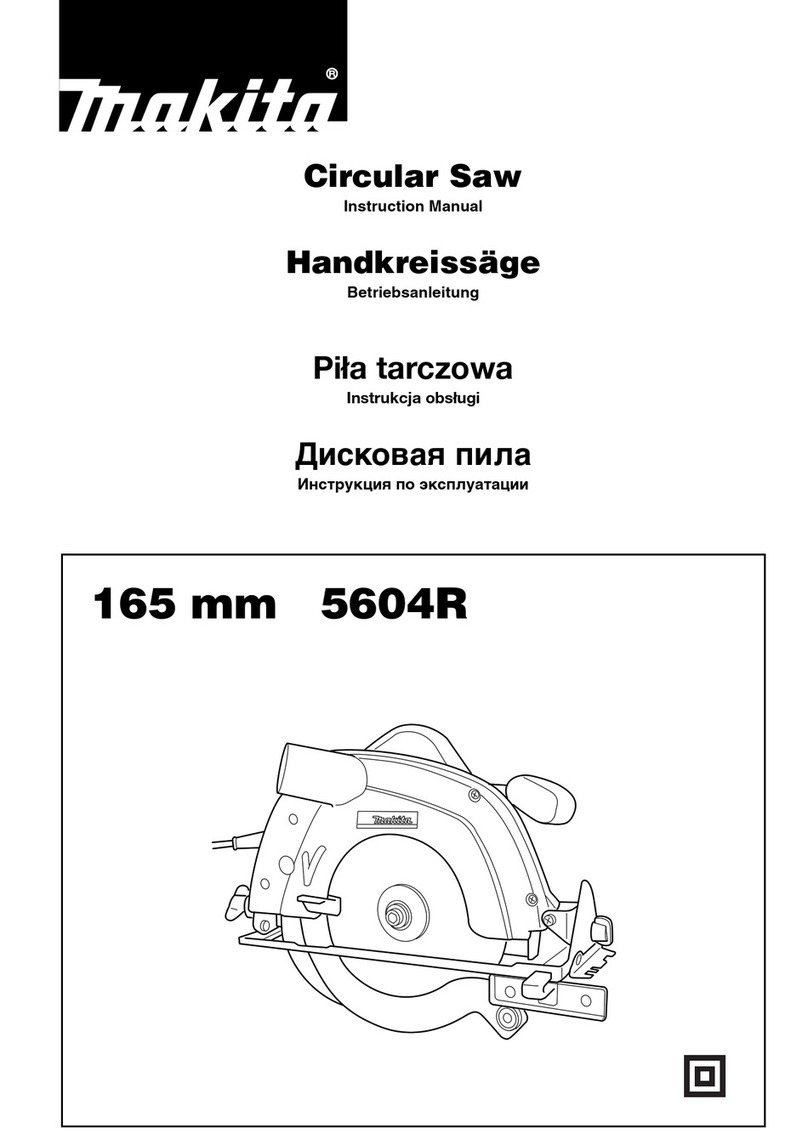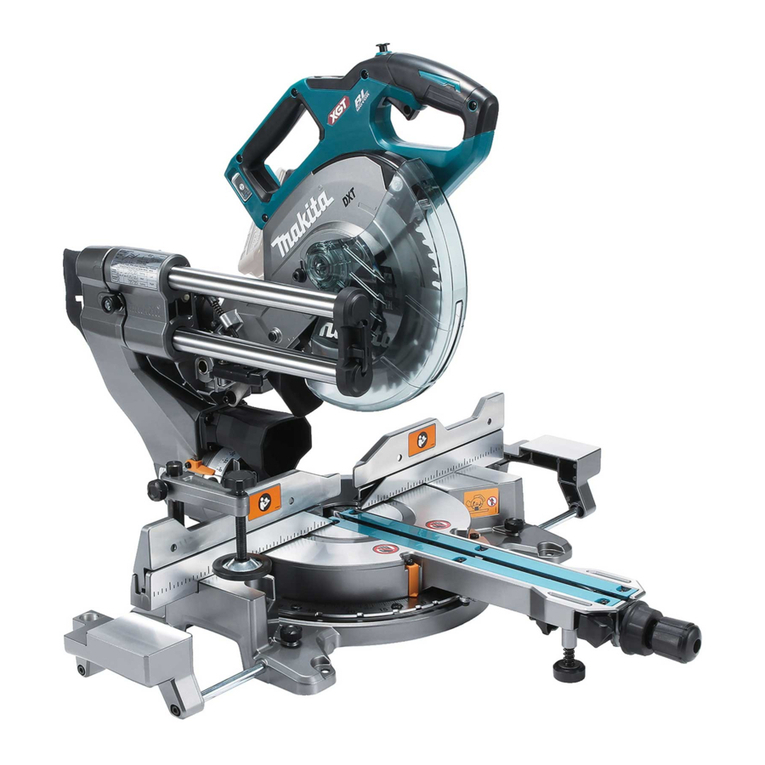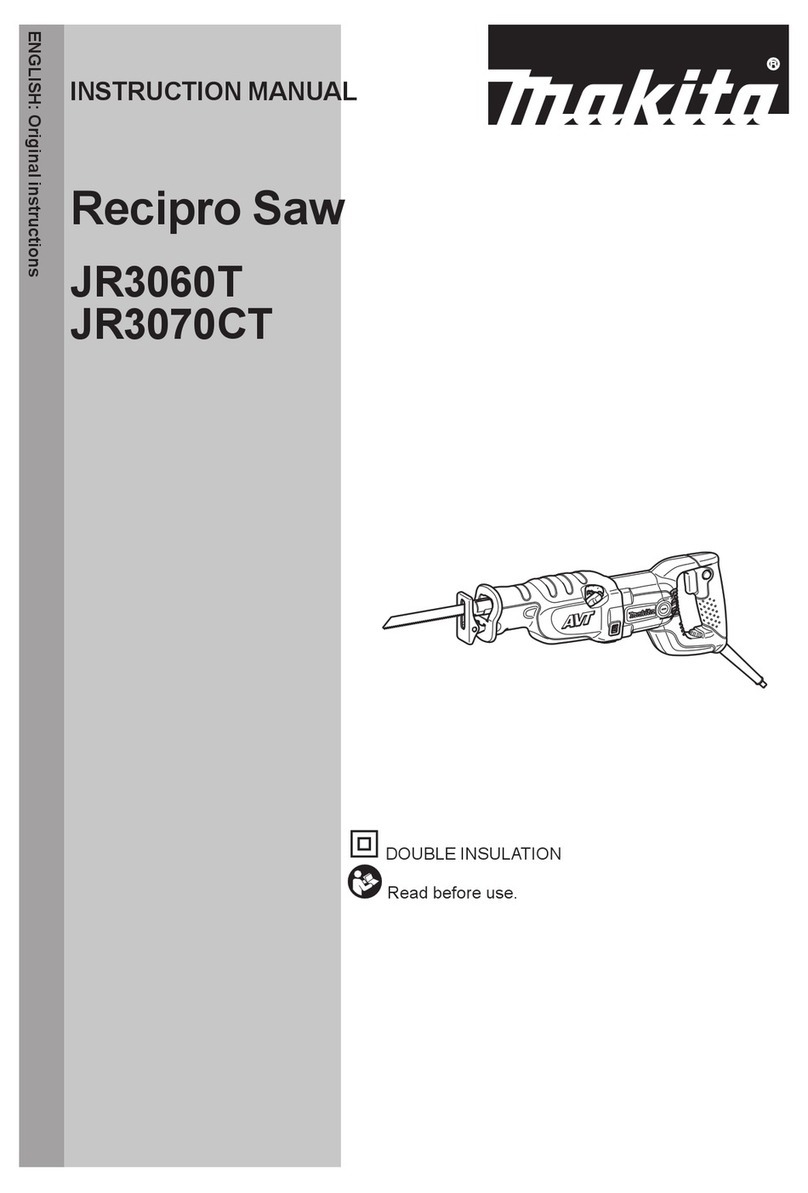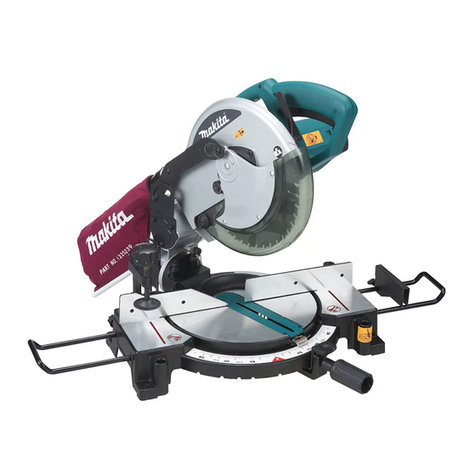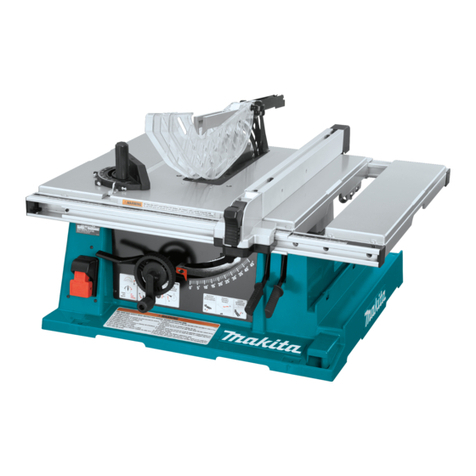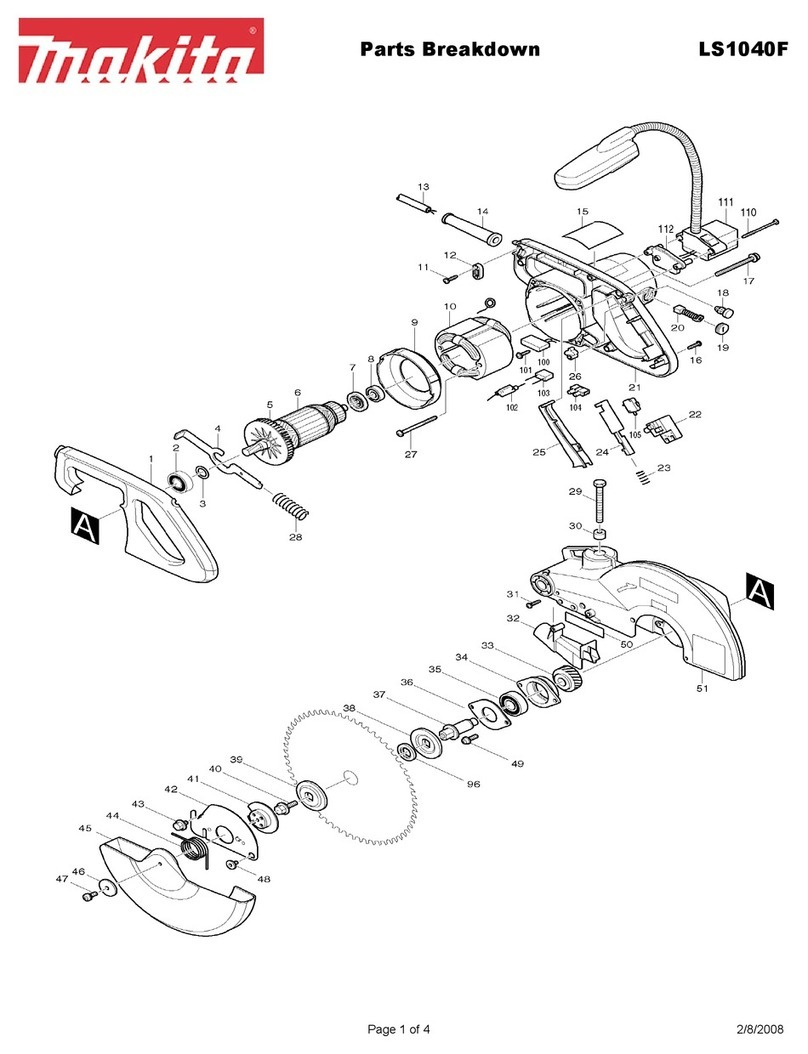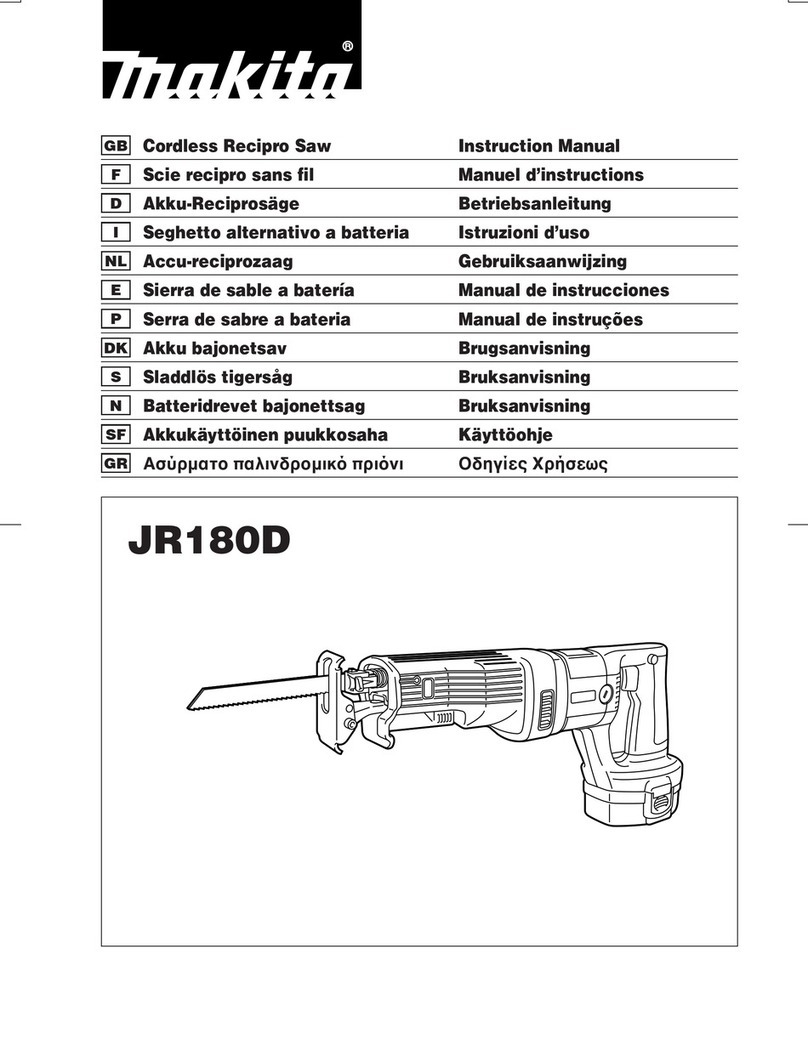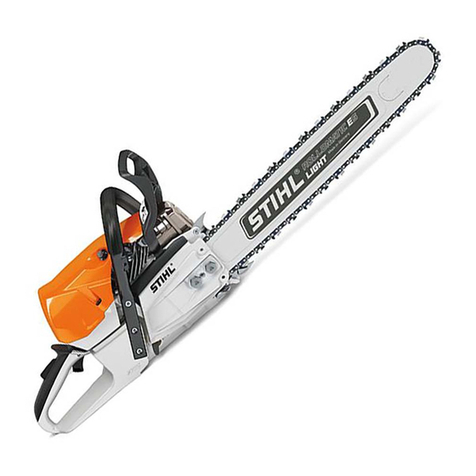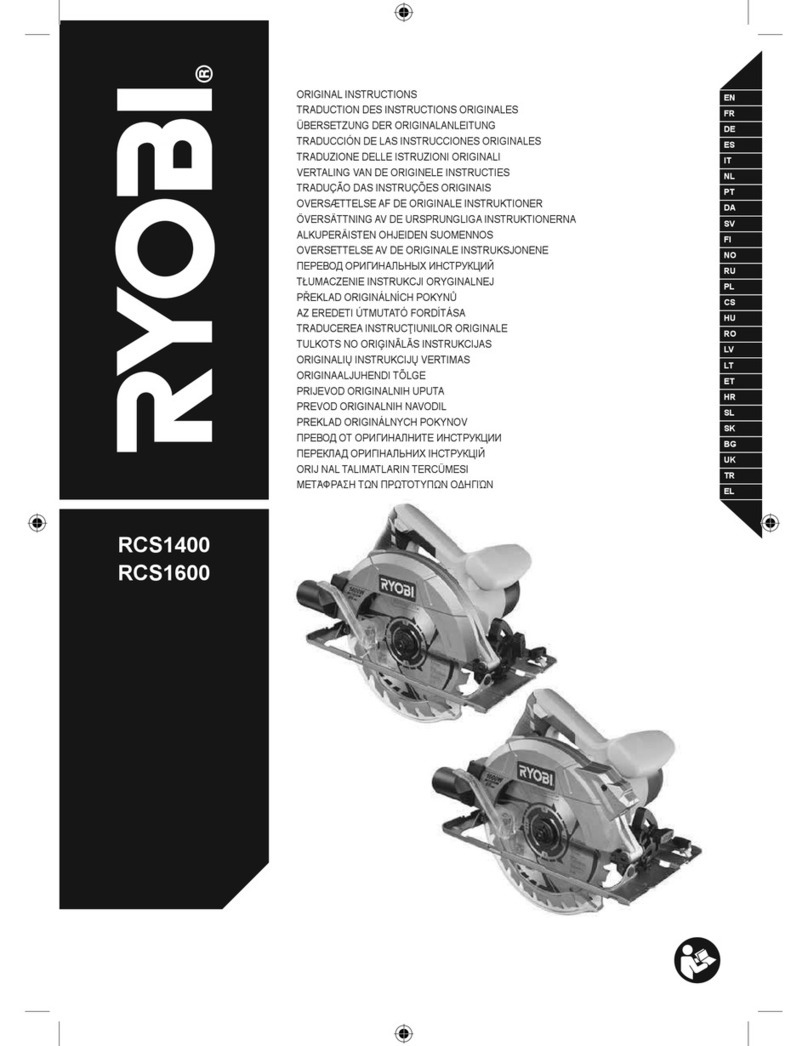
10
ENGLISH (Original instructions)
Explanation of general view
SPECIFICATIONS
Model LH1040/LH1040F
Blade diameter 255 mm - 260 mm
Blade body thickness 1.6 mm - 1.8 mm
Riving knife thickness 2.0 mm
Hole diameter
For all countries other than European countries 25.4 mm and 25 mm
For European countries 30 mm
Max. Cutting capacities (H x W) with blade 260 mm in diameter in the miter saw mode
Max. Cutting capacities at 90° in the table saw (bench saw mode) 40 mm
No load speed (min-1)4,800
Table size (W x L) 260 mm x 405 mm
Dimensions (L x W x H) 530 mm x 476 mm x 535 mm
Net weight 14.3 kg
Safety class /II
• Due to our continuing program of research and development, the specifications herein are subject to change without
notice.
• Specifications may differ from country to country.
• Weight according to EPTA-Procedure 01/2003
1. Auxiliary plate
2. Hex bolt
3. Base
4. Nut
5. Bolt
6. Lower blade guard A
7. Lower blade guard B
8. Top blade guard
9. Screw
10. Handle
11. Lever
12. Socket wrench
13. Adjusting bolt
14. Top surface of turn base
15. Periphery of blade
16. Guide fence
17. Pointer
18. Lock lever
19. Grip
20. Miter scale
21. Bevel scale
22. Switch
23. Lamp switch
24. Lamps
25. Stopper pin
26. Clamping screw
27. Top table
28. Motor housing
29. Center cover
30. Blade guard A
31. Shaft lock
32. Saw blade
33. Blade guard B
34. Blade case
35. Arrow
36. Outer flange
37. Inner flange
38. Spindle
39. Ring
40. Riving knife
41. Area to press in
42. Hex bolts
43. Blade width
44. Rip fence holder
45. Guide rail on the top table
46. Clamping screw (A)
47. Clamping screw (B)
48. Rip fence
49. Line to be aligned with
50. Workpiece
51. Square nut
52. Washer
53. Scale
54. Two screws
55. Dust nozzle
56. Dust bag
57. Fastener
58. Cap
59. Vacuum cleaner
60. Blade cover
61. Support
62. Turn base
63. Vise arm
64. Vise rod
65. Holder
66. Holder assembly
67. Vise knob
68. Projection
69. Vise shaft
70. Rod 12
71. Vise (optional accessory)
72. Vise
73. Spacer block
74. Aluminum extrusion
75. Over 10 mm
76. Over 460 mm
77. Hole
78. Set plate
79. Small boss
80. Face/edge parallel
81. Wood screw
82. Glue together
83. Hole (7 mm in diameter)
84. Bolt M6
85. Push stick
86. Auxiliary fence
87. Push block
88. Triangular rule
89. 0° adjusting bolt
90. Top surface of turn table
91. Arm
92. 45° bevel angle adjusting bolt
93. Limit mark
94. Screwdriver
95. Brush holder cap
Bevel angle Miter angle
0° 45°
0° 69 mm x 130 mm right 69 mm x 85 mm, 93 mm x 67 mm
93 mm x 95 mm left 69 mm x 85 mm, 93 mm x 67 mm
45° (left) 35 mm x 130 mm right 35 mm x 91 mm, 49 mm x 67 mm
53 mm x 95 mm left 35 mm x 65 mm, 49 mm x 42 mm
